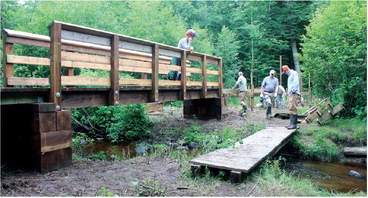Crew comes together to build Ice Age trail bridge


Trail volunteers work with Forest Service, New Vision Wilderness for project
Starting on July 7, a number of volunteers traveled to the Jerry ...


Trail volunteers work with Forest Service, New Vision Wilderness for project
Starting on July 7, a number of volunteers traveled to the Jerry ...